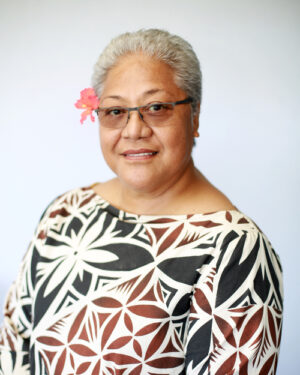
Fiamē Naomi Mata’afa (Credit: Programme de leadership dans le Pacifique)
Women and Adversity:
21st Century Women
Fiamē Naomi Mata’afa
Prime Minister of Samoa
I don’t know anyone who’s been to Samoa, called the “Cradle of Polynesia.” It’s an island in the central South Pacific and lies about halfway between Hawaii and New Zealand, nearly 7,000 miles from where I live in North Carolina. That country’s April 9, 2021 election is reminiscent of the 2020 election in the U.S.
The Prime Minister of Samoa had held that post for 22 years, but he didn’t want to give it up. He ordered Parliament be locked so Fiamē Naomi Mata’afa, the first woman elected Prime Minister in Samoa, couldn’t enter and be sworn in. However, the Samoan Constitution stipulates Parliament meet within 45 days of the election, and May 24, 2021 was that day. Mata’afa took the oath of office under a tent in front of Parliament, thereby upholding the Constitution.
One reason Malielegaoi didn’t want to give up power was that the election was tied until the one independent candidate swung his vote to Mata’afa. Malielegaoi then had his electoral commissioner appoint another candidate, so the score was tied again, and he had another official announce new elections were to be held. The Supreme Court ruled against both orders, so Mata’afa, was officially proclaimed the winner. Malielegaoi didn’t concede until July 26, 2021.
Mata’afa Bio:
- Born April 29, 1957 in Apia, the capital of Samoa
- Attended Samuel Marsden Collegiate School, a private school for girls in a suburb of Wellington, New Zealand
- Claimed her father’s title—Fiamē—in 1976. Samoan society is organized by family, and each family has its own title connected to areas of the country. She is chiefess (leader) over Lotofaga village on Samoa’s main island, Upol.
- Graduated from Wellington’s Victoria University in 1979 with a major in political science
- Her father was the first Prime Minister of Samoa, which won its independence from New Zealand in 1962.
- Not married
Career:
- 1985, elected to the Legislative Assembly of Samoa, representing the constituency of Lotofaga, previously held by her mother
- 1991-2006, Minister of Education, Sports and Culture, becoming the first woman Cabinet member
- 2006-2011, Minister of Women
- 2011-2016, Minister of Justice and Courts Administration
- 2016-2020, Deputy Prime Minister, the first woman to hold the post, and Minister of Natural Resources and Environment
- 2016-2020, Deputy leader of the HRPP, Human Rights Protection Party
- 2021-present, joined the FAST (Faatuatua i Le Atua Samoa ua Tasi) party, in opposition to the Land and Titles Bill. Unanimously elected its leader in March 2021
- April, 2021, elected Prime Minister, installed May 24, 2021
Learn more about her:
Fiame Naomi Mata’afa: Samoa’s First Woman Prime Minister – YouTube
Fiame Naomi Mata’afa legally recognised, ending months of political stalemate | The World – YouTube
Samoa’s first female leader has made history — now she faces a challenging future at home and abroad (theconversation.com)
Let me know what you know about Samoa.
Since American Samoa is a different country from Samoa, I didn’t include it in my blog. Besides, since women in American Samoa can’t vote, I won’t be writing about it in the near future.
Jo Ann, what an accomplished career you’ve had! I so enjoy seeing your work. Congratulations on a life well lived! I like to say I knew you when.
All best,
Susan Lerner Friedberg
Thanks, Susan. You have an accomplished career as well. We will always remember Lincoln-Way and our wonderful English Department.
Jo Ann
WOMEN & ADVERSITY
Fiame Naomi Mata’afa, PM Samoa
I’m interested to learn about Fiame Mata’afa, Samoa’s Prime Minister, although a
little surprised to know how life still goes on in that region.
The last I heard while living in Eastern Coastal China several years ago was that
American Samoa was sinking more than a half inch per year, with most of the
Island’s population living in their coastal regions. Many people were fleeing to
New Zealand and other safer havens. I assumed Samoa was dealing with similar
circumstances and fate, and the days in both places were numbered.
Now I see that Samoa is sinking at 0.4 inches per year, more slowly than the
American territory. Women like PM Mata’afa lend new dimensions to such
leadership roles and her island’s future. They deserve recognition and respect for
their unique contributions.
Since American Samoa is a different country from Samoa, I didn’t include it in my blog. Besides, since women in American Samoa can’t vote, I won’t be writing about it in the near future.